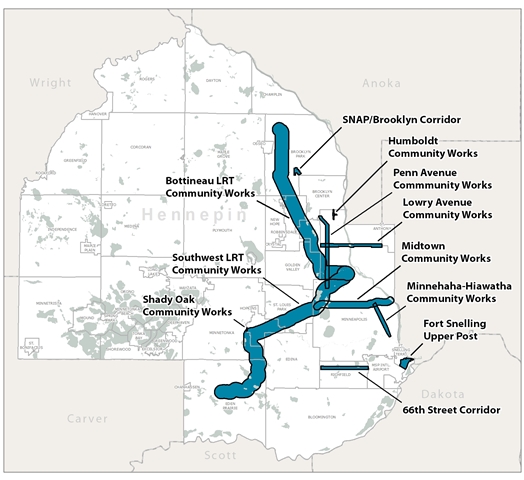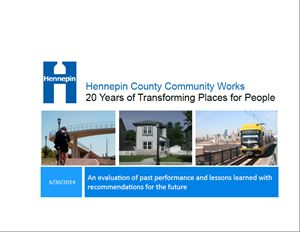Making collaboration work
More than 125 Cities, government agencies, businesses, educational and research institutions, neighborhood and community organizations, advocacy organizations and other nonprofits have been an essential to Community Works’ success. Their participation makes the community works goal of leading collaborative planning and implementation possible.
Cities
As essential partners in every community works program, cities not only have authority for land use, zoning and economic development, but they also implement housing policy and invest in improvements to local streets, sidewalks, trails and stormwater management. No less important, they offer a deep understanding of their communities and help build effective relationships with residents.
Businesses, employers, business partnerships and associations
By engaging the local business community, identifying issues that prevent business from thriving during construction projects and providing critical coordination of strategic private capital investment, these organizations provide essential support for long-term economic growth and workforce development in community works program areas.
Metropolitan Council
In setting goals for land use, transportation, housing and water resources for the Twin Cities region, the council assumes a crucial role that helps to maintain a long-term perspective on investments made through community works programs. The council also offers financial support for redevelopment through a number of federally funded grant programs. Its recent leadership in addressing equitable development and direct investment in community organizations to promote involvement has helped shape best practices.
Metro Transit and other transit agencies
In designing, engineering, constructing and operating bus and light rail services, these transit agencies are instrumental in helping to fulfill the community works goal of connecting people to jobs, housing, education, recreation, health services, retail and other amenities.
Community and neighborhood organizations
By hosting public meetings and open house events, facilitating small group conversations and other outreach efforts, these organizations connect neighborhood residents and diverse audiences to community works programs. Their perspective and tireless advocacy for community reinvestment to benefit residents is a crucial component of every community works program.
Foundations, anchor institutions, and community development and housing organizations
These organizations play a critical role in community works programs by identifying funding and coordinating investment and resources for specific community needs. They also support learning opportunities that provide access to national models and best practices.
Parks and watershed districts
As the steward of park lands, trails and water and other natural resources, park and watershed districts provide support for sustainable development and leadership on stormwater management issues and techniques, as well as commuter and recreational connections to the regional transportation system.

